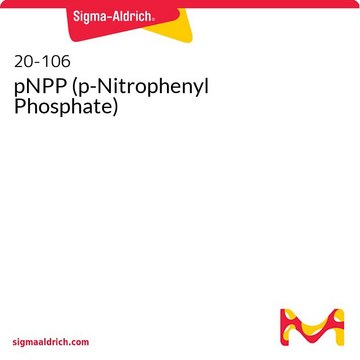N7155
Anti-Nitric Oxide Synthase, Brain (251-270) antibody produced in rabbit
IgG fraction of antiserum, buffered aqueous solution
Synonym(s):
Anti-bNOS
Sign Into View Organizational & Contract Pricing
All Photos(1)
About This Item
Recommended Products
biological source
rabbit
Quality Level
conjugate
unconjugated
antibody form
IgG fraction of antiserum
antibody product type
primary antibodies
clone
polyclonal
form
buffered aqueous solution
mol wt
antigen 150-160 kDa
species reactivity
human, rat
technique(s)
microarray: suitable
western blot: 1:10,000 using rat brain extract
UniProt accession no.
shipped in
dry ice
storage temp.
−20°C
target post-translational modification
unmodified
Gene Information
human ... NOS1(4842)
rat ... Nos1(24598)
General description
Nitric Oxide Synthase, Brain (NOS1) is mapped to human chromosome 12q24.22. The NOS isoform found in neurons is a 150 kDa protein. It is also termed as brain NOS (bNOS). Human bNOS and endothelial NOS (eNOS) share 52% amino acid identity, and rat and human bNOS share 93% amino acid identity.
Immunogen
synthetic peptide corresponding to nitric oxide synthase (NOS) of rat brain origin (bNOS, amino acids 251-270) conjugated to KLH. The immunogen sequence is highly conserved in human bNOS.
Application
Anti-Nitric Oxide Synthase, Brain (251-270) antibody produced in rabbit has been used in:
- double immunolabelling,
- immunofluorescence
- western blotting
Biochem/physiol Actions
Nitric Oxide Synthase, Brain (bNOS) is present also in skeletal muscle, where it is complexed with dystrophin and is absent in Duchenne muscular dystrophy (DMD). Neuronal and endothelial NOS are constitutively expressed and are dependent on Ca2+ calmodulin for nitric oxide (NO) production.
Physical form
Solution in 0.01 M phosphate buffered saline, pH 7.4, containing 15 mM sodium azide.
Disclaimer
Unless otherwise stated in our catalog or other company documentation accompanying the product(s), our products are intended for research use only and are not to be used for any other purpose, which includes but is not limited to, unauthorized commercial uses, in vitro diagnostic uses, ex vivo or in vivo therapeutic uses or any type of consumption or application to humans or animals.
Not finding the right product?
Try our Product Selector Tool.
recommended
Product No.
Description
Pricing
Storage Class
10 - Combustible liquids
wgk_germany
WGK 2
flash_point_f
Not applicable
flash_point_c
Not applicable
Choose from one of the most recent versions:
Already Own This Product?
Find documentation for the products that you have recently purchased in the Document Library.
nNOS-expressing neurons in the ventral tegmental area and substantia nigra pars compacta
Paul EJ, et al.
eNeuro, 5(5), 100-100 (2018)
Expression of nitric oxide synthase in the retina of monocular deprivation amblyopia rats
Wang QM, et al.
European Review for Medical and Pharmacological Sciences, 22(7), 1879-1883 (2018)
Daniel S Zahm et al.
The Journal of comparative neurology, 519(16), 3159-3188 (2011-05-28)
The midbrain dopaminergic neuronal groups A8, A9, A10, and A10dc occupy, respectively, the retrorubral field (RRF), substantia nigra compacta (SNc), ventral tegmental area (VTA), and ventrolateral periaqueductal gray (PAGvl). Collectively, these structures give rise to a mixed dopaminergic and nondopaminergic
Gene-based anchoring of the rat genetic linkage and cytogenetic maps: new regional localizations, orientation of the linkage groups, and insights into mammalian chromosome evolution
Claude S
Mammalian Genome (1998)
Reciprocal variations of nNOS and HSP90 are associated with fasting in gastrointestinal tract of the piglet
Jean-Francois G
Digestive Diseases and Sciences (2003)
Our team of scientists has experience in all areas of research including Life Science, Material Science, Chemical Synthesis, Chromatography, Analytical and many others.
Contact Technical Service






